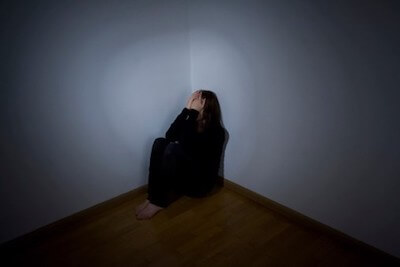Anyone who follows my writings knows that I have a problem with schools. I consider schools, and the current education system, to be no more than child abuse. I’ve said it often: we lock up kids for some of the best years of their lives, prisoners to some of the most dysfunctional weirdos in our society (teachers), and pump them full the absurd nonsense which clearly does NOT work (just look at the world around you and tell me all is cool!)
As usual, I’m right (it gets boring to be right all the time—but I’m not ready to give that up yet!) Now a 13-year study from the Connecticut Children’s Mental Health Center in Hartford, proves that schools are literally driving our kids crazy.1
It’s insane. Children committing suicide because they can’t stand the pressures of school? Yes, it’s true. The suicide rate among 10 to 14 year olds has doubled since 2007. And for girls in that age group, the suicide rate has tripled over the past 15 years.
How cruel is that?
Problem with School #1 – Children Under Pressure
Boston College psychology professor, Peter Gray, looked closely at this new data and found that children’s mental health is directly related to school attendance. Meaning the more time kids spend in school, the sicker and crazier they get.
Dr. Gray found that children’s psychiatric ER visits fall dramatically in the summer recess and rise again once school begins. The spike for danger to kids and the incidence of suicide is highest in May, at the extreme end of the year of academic pressures.
Dr. Gray concludes: “The available evidence suggests quite strongly that school is bad for children’s mental health. Of course, it’s bad for their physical health, too; nature did not design children to be cooped up all day at a micromanaged, sedentary job.”
Hah! Any other deduction would be perverted.
Dr. Gray’s research, and that of others, has shown that school-induced stress is leading to skyrocketing anxiety and depression in children.2
The reason is not hard to find:
According to Dr. Gray, children now spend “…More hours per day, days per year, and years of their life in school than ever before. More weight is given to tests and grades than ever. Outside of school, children spend more time than ever in settings in which they are directed, protected, catered to, ranked, judged, and rewarded by adults. In all of these settings adults are in control, not children.”
Dr Gray’ study is not the only source of worry: A national study of trends in adolescent depression rates found that teens reporting a major depressive episode (MDE) within the previous year jumped from 8.7% in 2005 to 11.5% in 2014. The report, published last November in the journal Pediatrics, reveals: “The risk of depression sharply rises as children transition to adolescence.” 3
The researchers cite stress and bullying as contributing factors.

Problem with School #2 – More Stressed than Adults
Another 2013 study by the American Psychological Association4 found that school is the main driver of teenage stress, and that teenagers are more stressed-out than adults. According to their study: “Teens report that their stress level during the school year far exceeds what they believe to be healthy (5.8 vs. 3.9 on a 10-point scale) and tops adults’ average reported stress levels (5.8 for teens vs. 5.1 for adults).”
“We don’t need to drive kids crazy to educate them.”
The report reveals that 83% of teens said that school was “a somewhat or significant source of stress,” with 27% of teens reporting “extreme stress” during the school year. Interestingly, that number declines to just 13% in the summer recess.
Curious about mounting data showing correlations between school attendance and anxiety, Dr. Gray conducted his own informal, online survey of children who left conventional schooling for homeschooling or other forms of alternative education.
He found that, specifically for children previously labeled ADHD, often with related anxiety issues, “the children’s behavior, moods, and learning generally improved when they stopped conventional schooling…” Results were particularly positive when children engaged in self-directed education, where they had more freedom and control of their own learning.
Problem with School #3 – Missing Play
As Peter Gray told us in his TEDx talk: What’s missing for young kids today is a sense of play. Play is not the alternative to “serious learning”, as educators and parents seem to think. Play is just about the ONLY learning that works on kids (adults too, ahem!)
Playfulness is often punished in schools. Yet it is a natural instinct and has to be stamped out of kids (as it is, ruthlessly).
Young mammals of essentially all species play. In play, they develop fit bodies, they practice physical skills that are crucial to their survival, and they also practice social and emotional skills. By playing together, young animals learn to cooperate with one another, they learn to be in close vicinity with one another without losing their tempers — it’s very important for social animals to develop.
Researchers have conducted laboratory experiments in which they deprived young animals of play. The result is that when these young animals develop, they were socially and emotionally crippled.
If you place one of these play-deprived animals with an unfamiliar peer, they alternately freeze in fear and lash out with inappropriate, ineffective aggression; they don’t learn to respond to the social signals of the other animal.
When you place one of these play-deprived animals in a somewhat novel, somewhat frightening environment, they overreact with fear: they freeze in the corner, they don’t adapt to — they don’t explore the environment as a normal animal would.2
No More Coercive Education
We now have the concept of coercive education, meaning forcing children, against their will, to comply with adult agendas set for them. It’s not a nice label. But then, it’s not a nice method of teaching our kids.
As founder of the Alliance for Self-Directed Education (not quite the same as “home schooling”, note), Dr. Gray urges parents and educators to think critically about the potential negative impacts of coercive schooling on children’s health and well-being. He asserts: “We don’t need to drive kids crazy to educate them. Given freedom and opportunity, without coercion, young people educate themselves.”
Here’s a great short video from the Alliance for Self-Directed Education website:
You can enroll with them here.
Finally, DO NOT MISS THIS AMAZING VIDEO!
Sir Kenneth Robinson’s TED talk “Do Schools Kill Creativity” has been the most watched of all TED talks, ever (over 45 million views). It’s hilarious as well as deeply thought-provoking.
I’ve shared it with friends’ scores of times! (19 minutes long)
References:
- Pediatrics, November 2016, National Trends in the Prevalence and Treatment of Depression in Adolescents and Young Adults
- https://www.psychologytoday.com/blog/freedom-learn/201001/the-decline-play-and-rise-in-childrens-mental-disorders.
- http://pediatrics.aappublications.org/content/early/2016/11/10/peds.2016-1878
- http://www.apa.org/news/press/releases/stress/2013/stress-report.pdf
The post The Problem with School Is Causing Teenage Stress appeared first on Alternative Doctor Dev Site.

